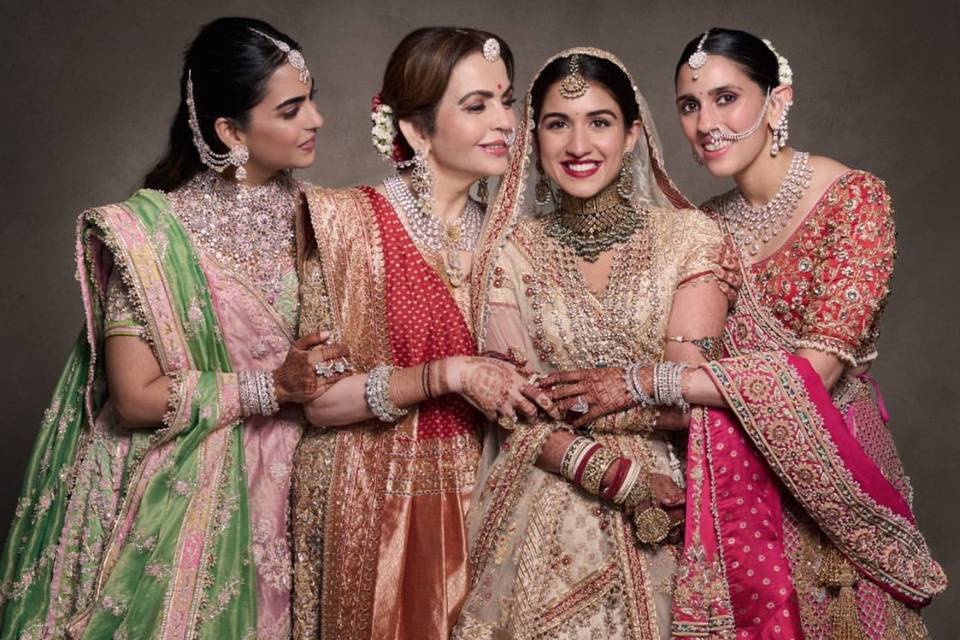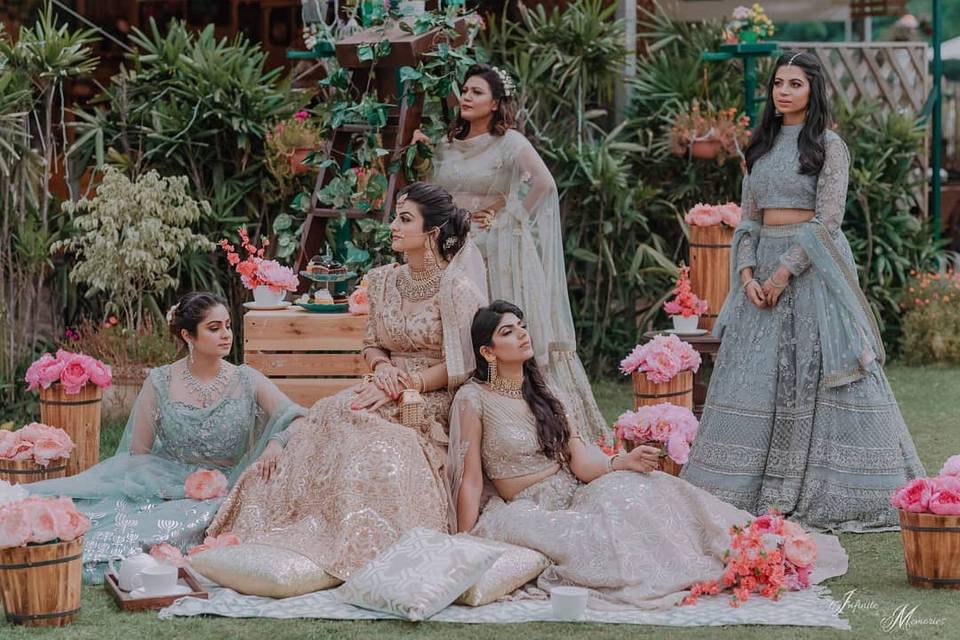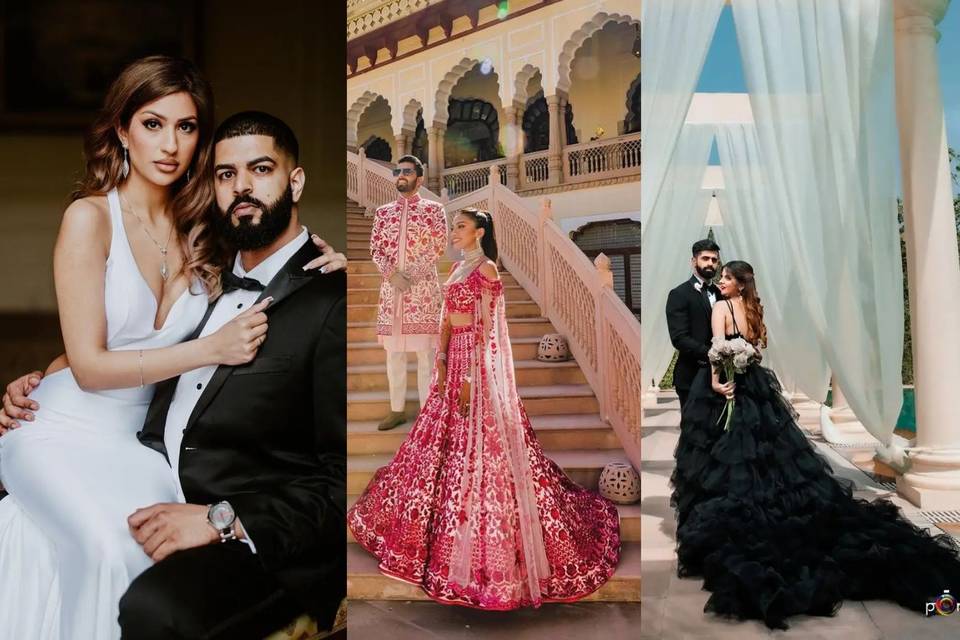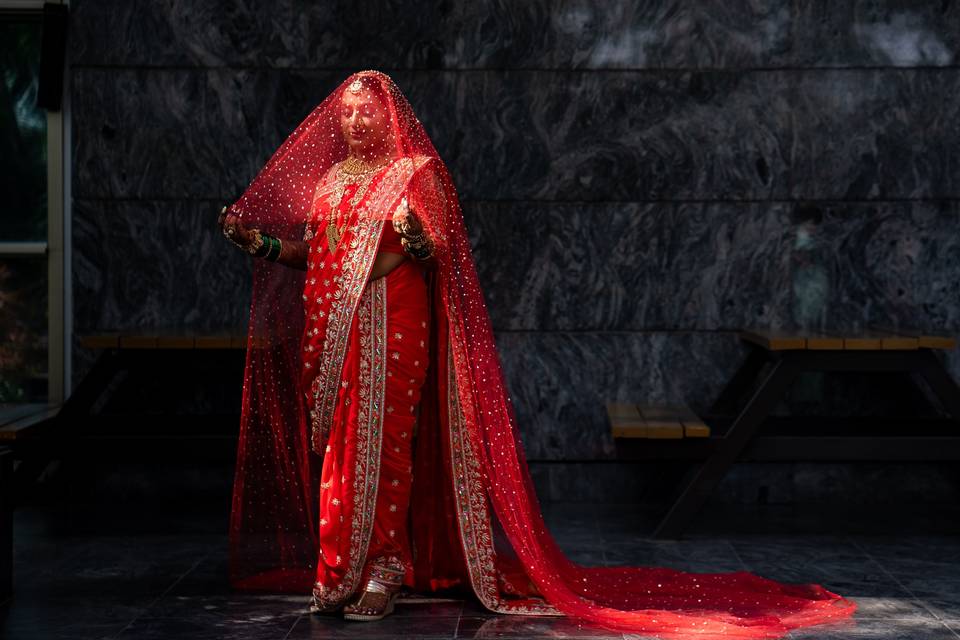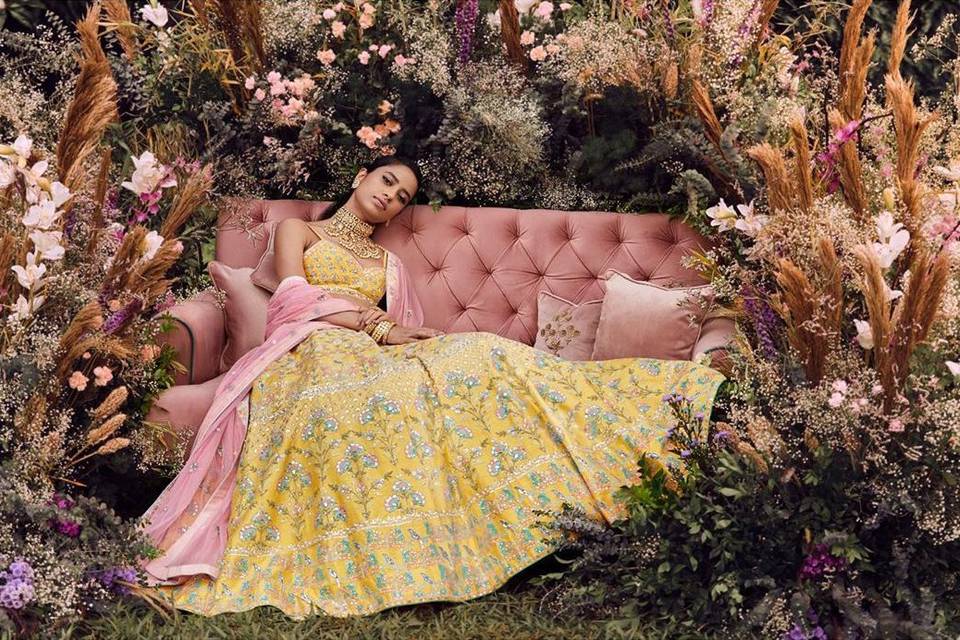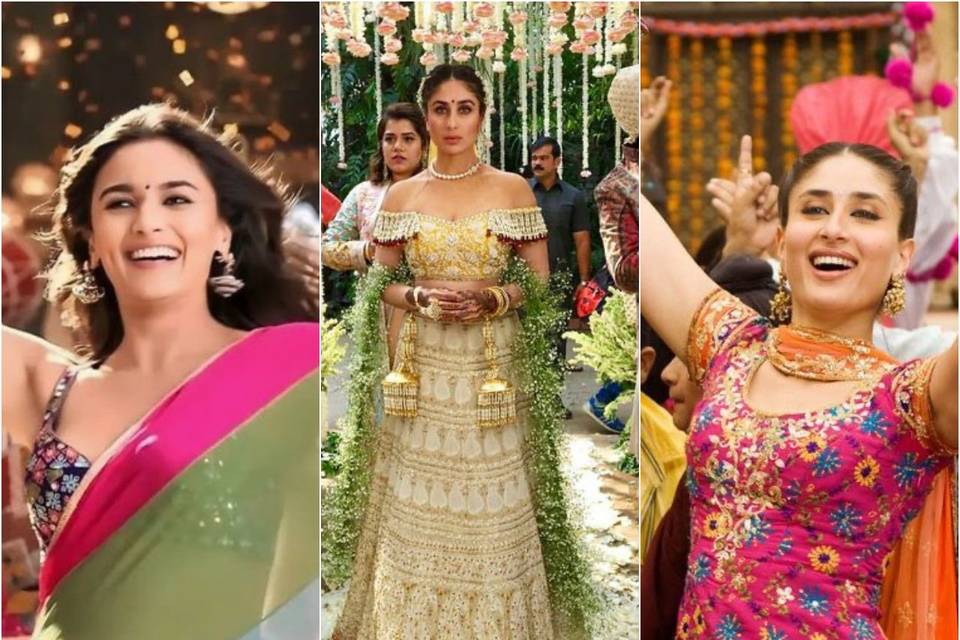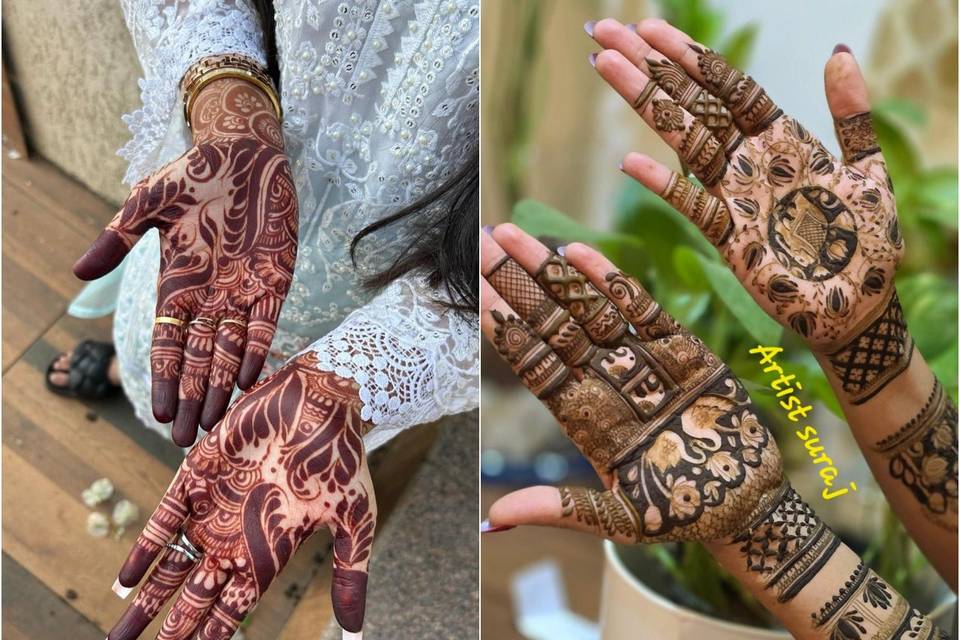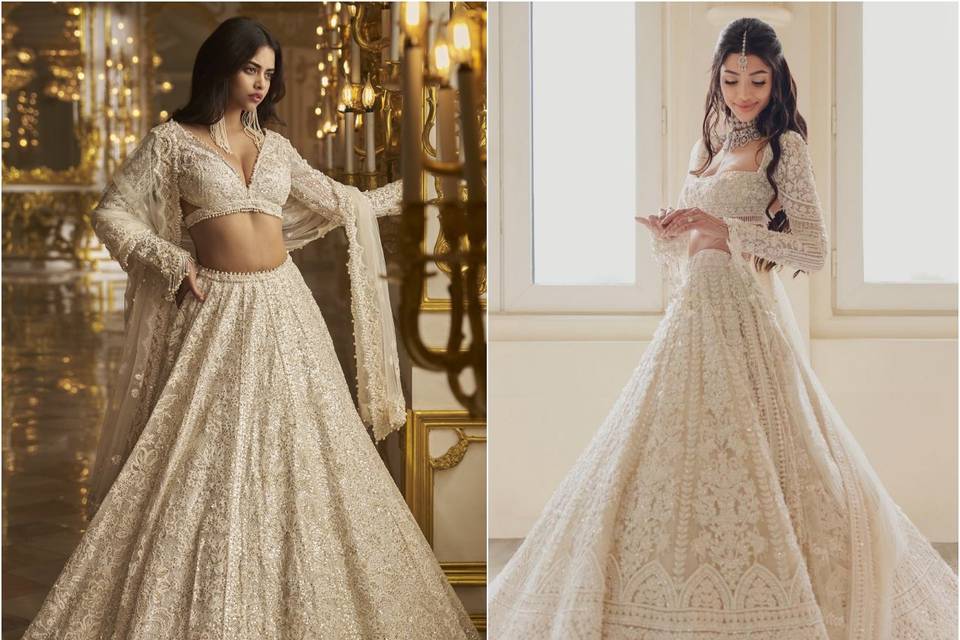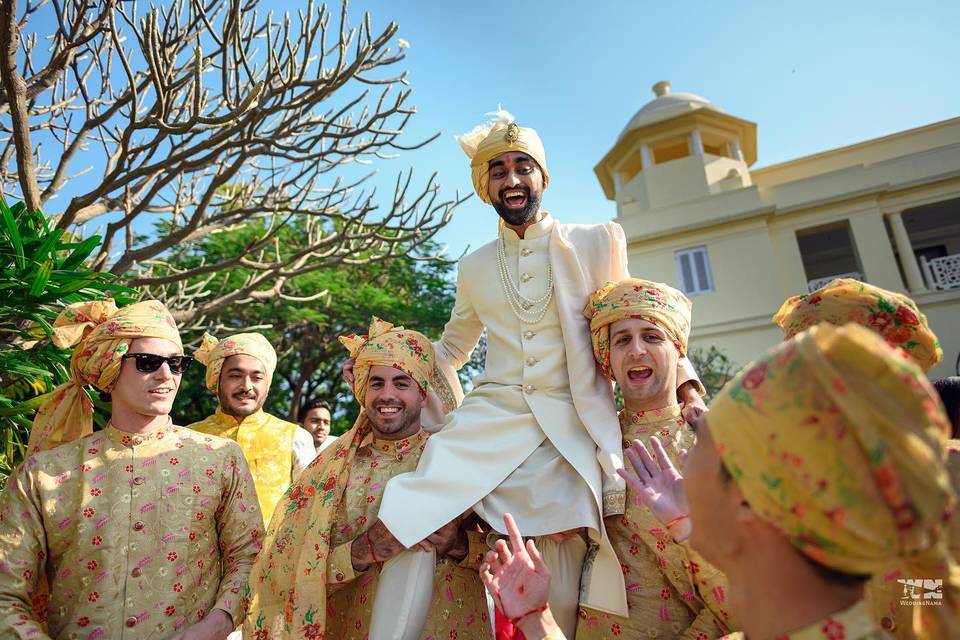16 Couple Wedding Dresses Across Various Traditions & Cultures In India
Presenting 16 wedding dresses from across India that adds to the diversity and rich culture of the country.
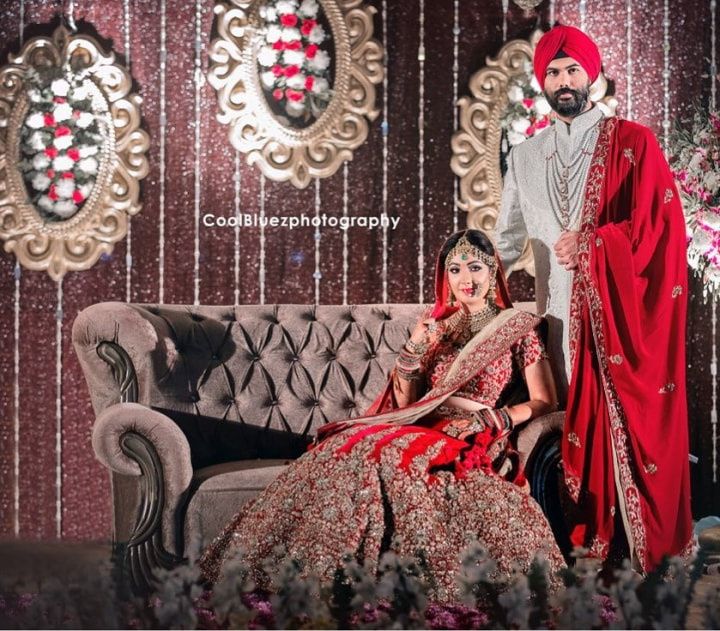
Weddings… the myriad of hues, melodious music, the chatter of diverse tongues! Indeed, the scene is a fusion of beautiful cultures across the country fitting into a single frame. Whether it’s the wedding décor or the wedding dress, the multitude of colours is, undoubtedly, a treat to the eyes.
The diversity is breathtaking, reflecting so beautifully in the dresses of the brides and the groom and we owe it how unitedly diverse India is. Talk about a Kashmiri wedding, and you will have the bride and groom decked up in tasteful glittery attires while the Indian couple wedding dress during the Parsi wedding reflects subtle and off white hues.
We’ve thrown some light on different couple wedding dresses from across India, each of them being unique, resplendent and a true reflection of celebration. Have a look:
1. Kashmir (Pandit and Muslim)
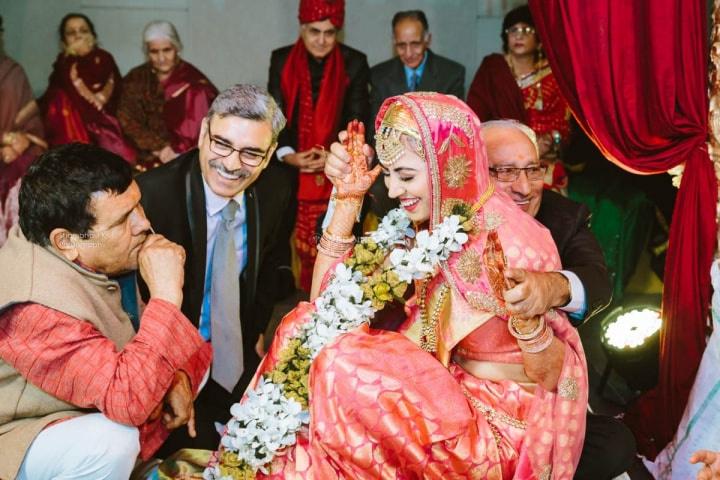
Kashmir has the maximum number of Muslim inhabitants. Hence, the Muslim influence is very evident in their tradition, culture and day-to-day ensembles, especially the couple wedding dresses.
Generally, women choose to wear bright coloured wedding attire known as the Pheran. This is a loose fitted Salwaar kameez which is a heavy embroidery called Kashida. Taranga is the traditional headgear, which is donned by the brides. Muslim brides wear Abaya. Kashmiri brides wear heavy jewellery, especially silver ornaments. In winters, shawls also known as Chenar are also brought to use.
When it comes to men, they wear Kaftan. The headgear includes a cap which is made of either wool or fine cotton. The use of a half sleeve coat with an open front is also quite popular among the Kashmiri grooms.
2. Punjab

Known for the extravagant lifestyle, the rich tradition of Punjab is also evident in the Punjabi couple’s wedding dress.
The Punjabi bride wears either a lehenga or an embellished Salwaar kameez in the vibrant colours like pink, red, orange and similar. A Punjabi bride is incomplete without Kalire and Chura. Punjabi grooms are either seen in a highly embellished Kurta Pajama with a bright scarf or a smart Sherwani. For the Sikh weddings, the grooms wear matching headgear, known as Pugh or turban. In certain Punjabi communities, men carry a sword in their right hand.
3. Himachal Pradesh
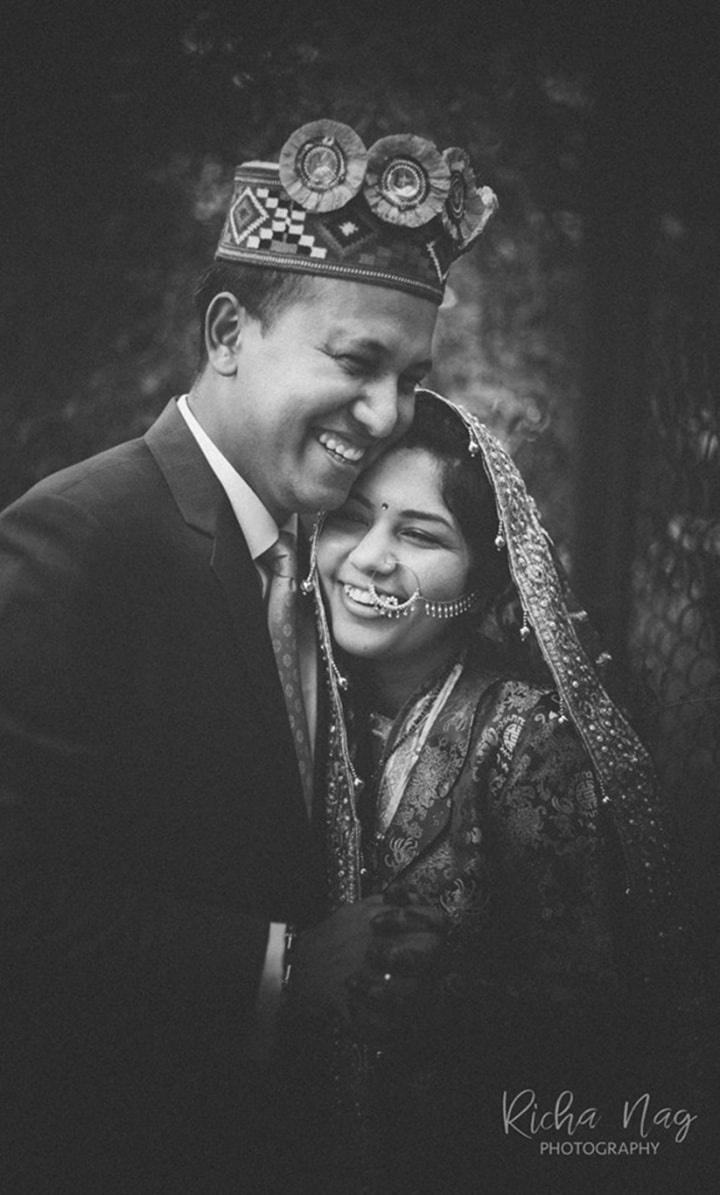
A Pahari or Himachali bride adorns a traditional dress, known as Pichhori, during her wedding. However, the look is never complete without her big nose ring, which is given to her by the groom’s side.
4. Rajasthan (Rajput, Marwari)

The love for tradition in Rajasthani folks speaks volumes about the culture. The same enthusiasm is visible in the couple wedding dresses. The Rajasthani brides wear Ghagra Choli in vibrant colours. These are crafted with elaborate zari work along with designer Gota Patti appliqués. Jewellery is an essential part of their ensemble and they never forget to wear a choker known as Aad, and Rakhri, the circular Maang Tikka.
The traditional wedding dress for Rajasthani men includes dhoti kurta. While dhoti is usually light coloured and plain, kurta includes heavy embroidery and embellishments. The headdress worn by men is known as Pagdi. The use of Kundan necklaces is also popular.
5. Haryana

There are mainly three communities in Haryana – Jat, Rajput and Ahir. Talking about the Jat brides, they wear Ghagra with a shirt (which exactly looks like a men’s shirt) and a Dupatta, which is known as Orna. The Ahir brides wear a lehenga with a blouse known as Angia. They also wear an Orna with red or yellow fringes. The bridal dress of the Rajput women is similar to the Ahir brides, with the Orna having the white fringes instead of red and yellow. Silver jewellery is prevalent.
All the Haryanvi men choose to wear kurta pyjama or dhoti kurta at their weddings, along with the special turban. The style of tying this turban differentiates the 3 communities.
6. Uttar Pradesh
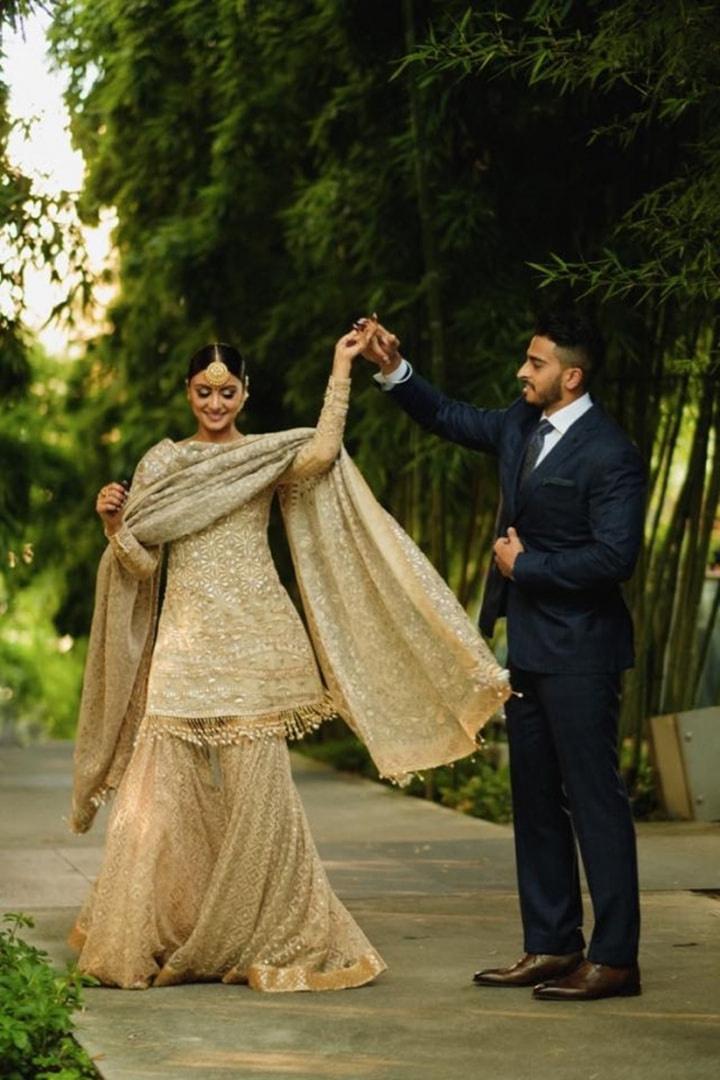
During the weddings, the brides wear heavily embellished salwaar kameez. The distinctive style of bottom wear called Churidar originates from this state. Some brides also wear Sarees. Muslim brides adorn an embroidered Sharara.
The grooms of Uttar Pradesh wear kurta pyjama along with headgear such as Pagdi. Sherwani is very popular among the Muslim grooms.
7. Bihar
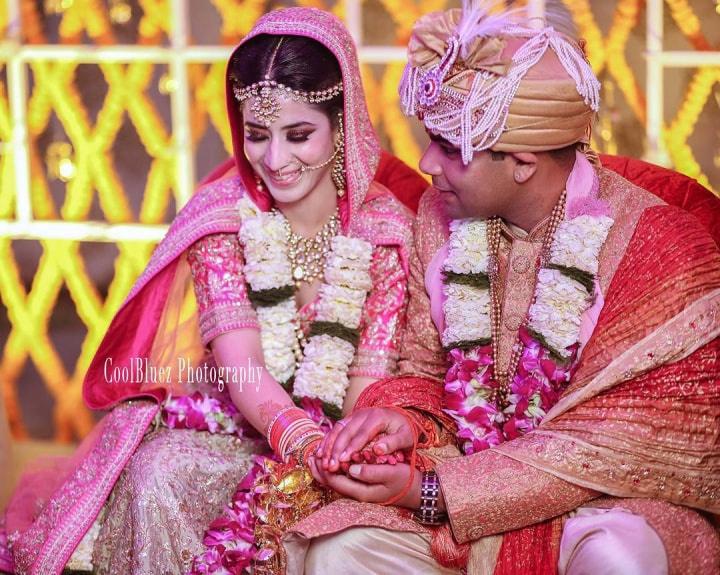
Saree is the staple dress for Biharis, and that is evident in their weddings. The brides generally wear Sarees, especially in a yellow or red hue. The heavy gold jewellery is a must. The bridal dress in Bihar also includes Odhni in yellow colour. This is given to the bride by his maternal uncle. This Odhni denotes prosperity and happiness in the life of the bride.
Embellished kurta pyjama or Sherwani is popular among the Bihari grooms. Also, the headgear, known as Pagdi or turban is a must for the Bihari grooms.
8. Bengal

In Bengali weddings, the bride dons a rich Benarasi Saree. The preferred colour is red; however, with a modern approach, brides are experimenting with shades of pink and red. The red bindi on the forehead and Alta on the feet and hands completes the Bengali bridal look. They also wear a Mukut - a headgear adorning the hair. The grooms sport a kurta and dhoti.
9. Orissa
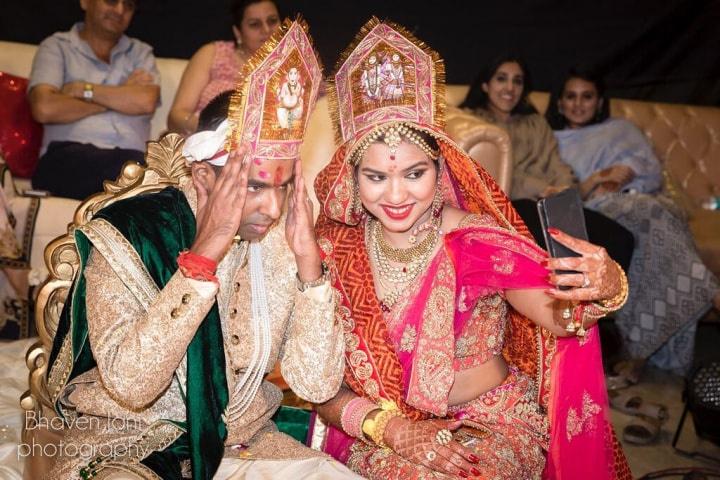
An Oriya bride wears a lehenga or a saree in the dark shades of red. The traditional handwork completes the bridal wear. During the wedding rituals, the bride is laden with a red Chunari. And, then the wedding couple wears a traditional headgear. Oriya grooms wear dhoti kurta. The dhoti is known as Dhooti.
10. Assam

In the Assamese weddings, the bride wears Mekhla Chadar, a traditional bridal dress, provided to her by the groom’s mother. This dress is often a cream or off-white saree with gold work. The jewellery and makeup are minimal. However, the Maang Tikka is a necessity as it is considered auspicious.
11. Gujarat

Gujarati weddings are an elaborate affair. The Gujarati bride can be seen in outfits, which are intricately designed and are deeply connected to the community. The bride is generally seen in the traditional saree in the shades of red. During the wedding, the bride changes two sarees - a Panetar and Gharchola.
The traditional dress for a Gujarati grooms includes a short kurta along with a dhoti. However, with the changing times, the grooms stick to simple dhoti kurta or sherwani.
12. Maharashtra
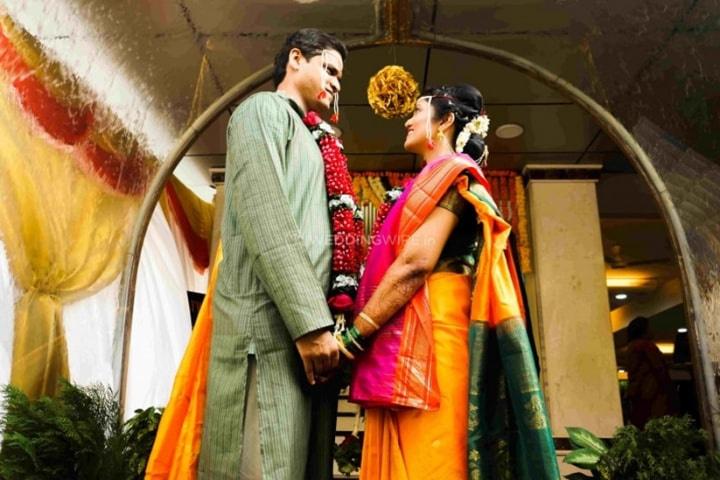
Mundavalya is the first thing that one can notice in the Maharashtrian bride. It is a string of flowers or pearls tied on the forehead of the bride. A Maharashtrian bride wears a silk saree with golden border, commonly known as Paithani. This saree is worn in a dhoti style. The bridal look is complete with a traditional half-moon shaped nath and a matching crescent-shaped bindi.
Maharashtrian grooms stick to kurta dhoti or kurta pyjama, with the lower garment being light in colour and a bright colour for the kurta.
13. Karnataka (Mangalore, Coorg)

The bridal dress of the women in Karnataka includes a saree with a special blouse, also known as Kuppasa. The saree is generally bright in colour with white borders known as “Aona”. The Coorgi brides can be seen in a saree worn in a unique way. They also cover their heads with a scarf, which is tied around their hair.
The Grooms wear bright kurta and dhoti. The dhoti is also known as Dhotara. The Angavastra - a shawl adorned on one side of the shoulder, completes the look of the groom. For the headgear, two types are prevalent – Pheta and Rumal. While Rumal is not generally used, Pheta is worn in the Mysore culture.
14. Parsi

A Parsi wedding is known as a Lagan. During the wedding, the bride wears a white or an off-white saree and adorns minimal jewellery. The Grooms go with the white coloured shirt and pant with shirt untucked, giving resemblance to the coat. A black headgear completes the look of the Parsi groom.
15. Kerala
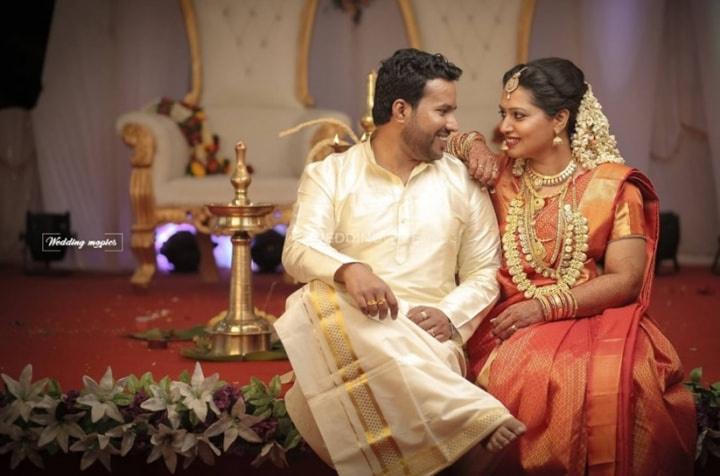
In Keralite weddings, the bride dresses up in a heavy Kanchipuram or Kanjeevaram saree in a bright shade. Off-white sarees with a golden border can also be seen during some weddings. Flowers are used extensively for the hair styling of the bride. Heavy jewellery is an integral part of a Kerala wedding.
16. Tamil Nadu

Bright coloured Koorai sarees are adorned by a Tamilian bride, which has bright red hues with golden and floral motifs. Jewellery is the highlight of the Tamilian bride and includes the Maang Tikka, earrings, layered necklace and Bajuband etc. Flowers and jewellery are used for hair decoration. Grooms wear a traditional dhoti, known as Vasthi.
Every couple wedding dress across the country has a story of culture weaved intricately into every thread. Whether it’s the colour or the style, these couple wedding dresses have an unfailing charm and hint of revelry.
How many traditional Indian weddings have you witnessed?

